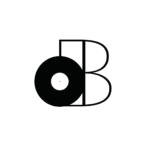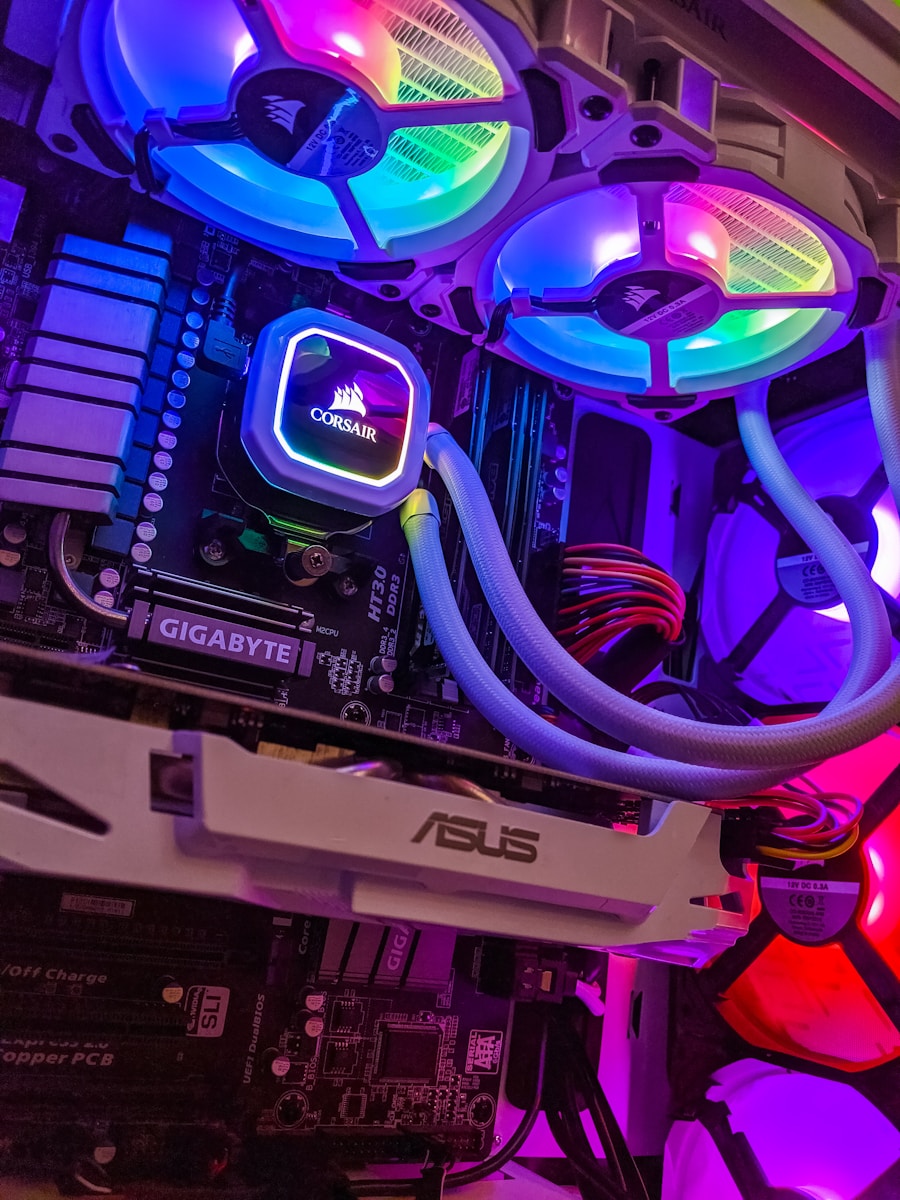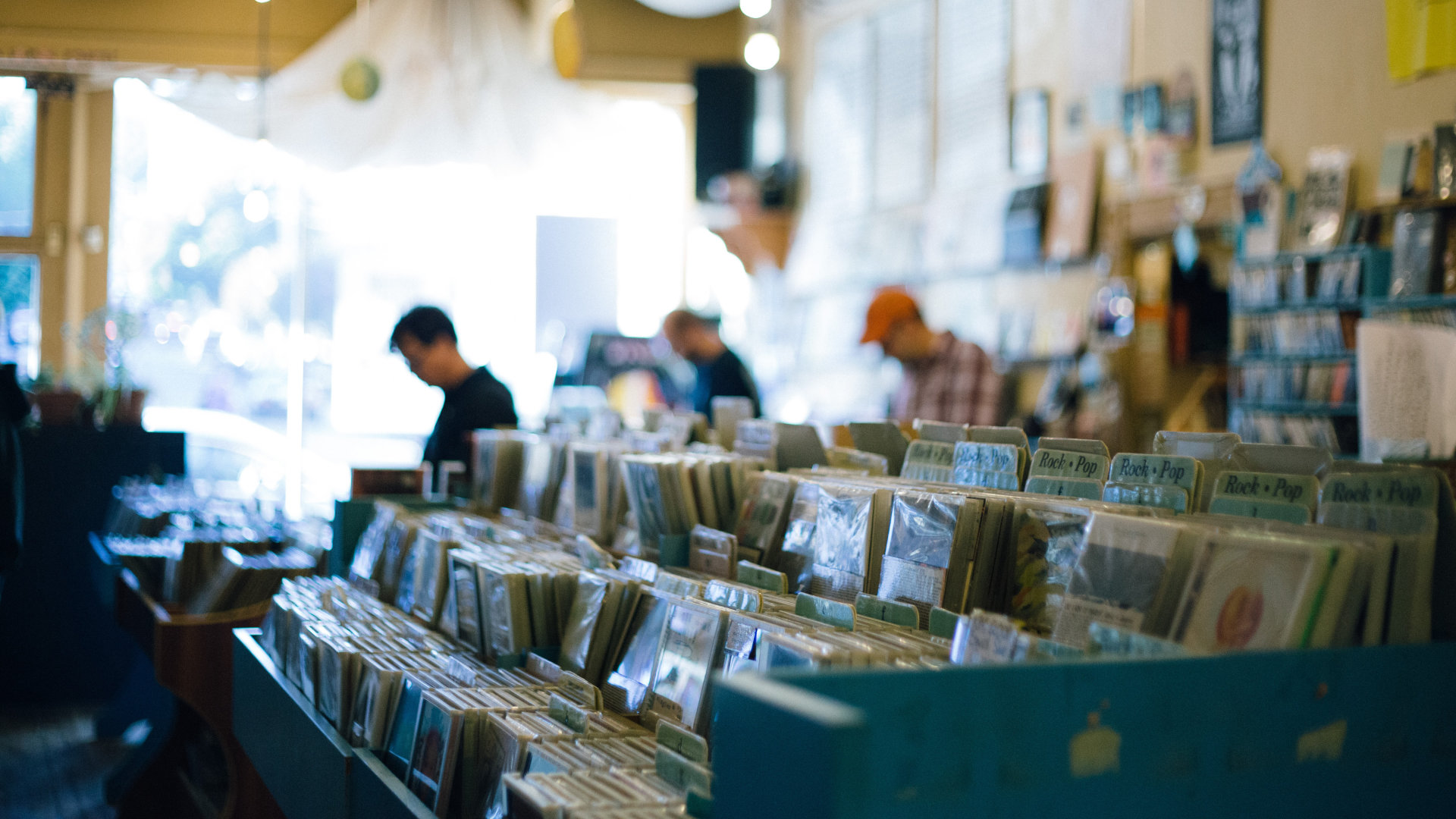If the most famous pop/rock band of all time recorded drums using two microphones, that should be good enough for the rest of us. Right? So, how did The Beatles record drums anyway? Did they actually just use only two microphones? Was there anything else worth mentioning? Let’s find out!
If you’ve been asking yourself “how did The Beatles record drums”, you’re most likely interested in recording your own drums. “If it’s good enough for them, it’s good enough for me”! Well, I was in the same position and that’s how I discovered that recording drums with two microphones was possible (more than possible). However, there are many ways to record drums with two microphones. We’ll be discussing how The Beatles did it and what types of microphones they were using.
- The Beatles recorded drums with two microphones
- Which microphones did The Beatles use to record drums?
- Which signal processors did The Beatles use to record drums?
- The Beatles changed the way we record drums
The Beatles recorded drums with two microphones
For the most part, The Beatles used two microphones to record their drums. In the 60s, most bands recording at Abbey Roads studios were using the same technique and that includes some other famous examples such as Pink Floyd!
Needless to say, recording drums with two microphones yields professional results.
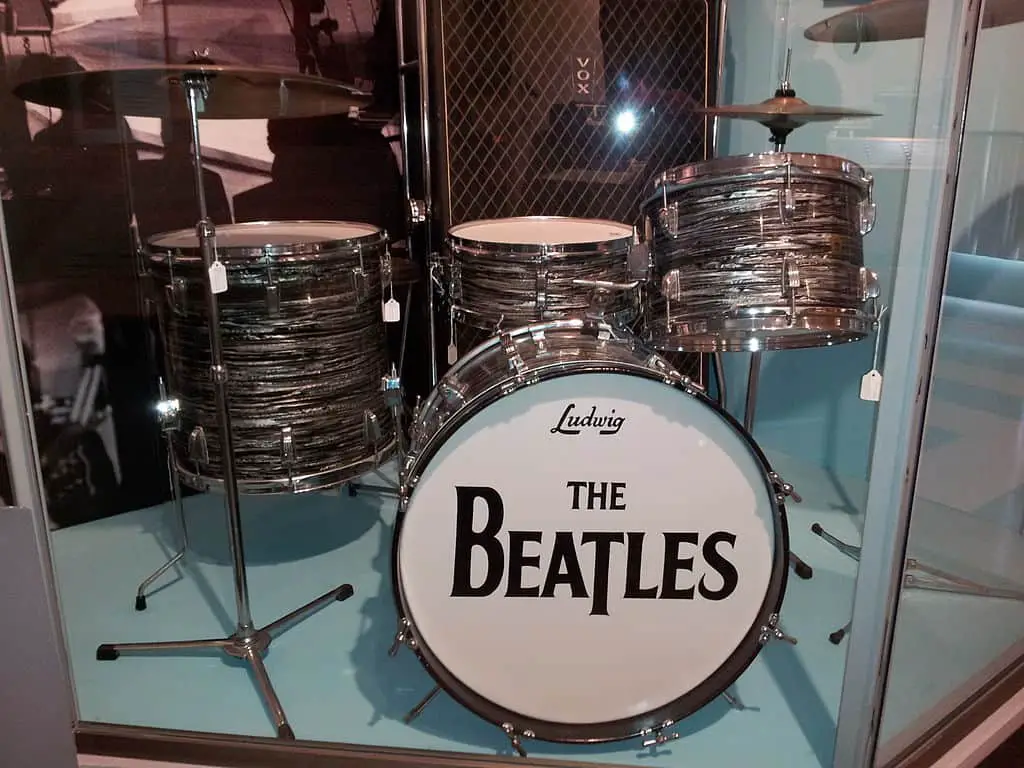
However, it’s worth mentioning that the late 60s witnessed the addition of a third microphone. It was placed underneath the snare drum to add more “punch”. That being said, it wasn’t always the case so I don’t think it’s an essential part of their sound.
The essential part of their sound relied heavily on the microphone placement.
We’re talking about the overhead + kick drum microphone combinations.
It’s also important to remember that The Beatles (and others) recorded drums in mono. In other words, we’re working with ONE overhead microphone and not the stereo pair we’ve grown accustomed to seeing in the 21st century.
To be more specific:
- The overhead microphone was placed about 1.5 meters above the snare
- The kick drum microphone was placed about 8-10 centimeters in front of the kick
This microphone configuration is still widely used today. It’s also quite common to have the mono overhead replaced with a pair of matched stereo microphones. However, the essential setup requires only TWO microphones.
The question remains… Which microphones?
Which microphones did The Beatles use to record drums?
As the sound of The Beatles evolved, so did their selection of equipment. The only way to determine which microphones they used would be to study each album/era independently.
It really depends on the sound you’re going for.
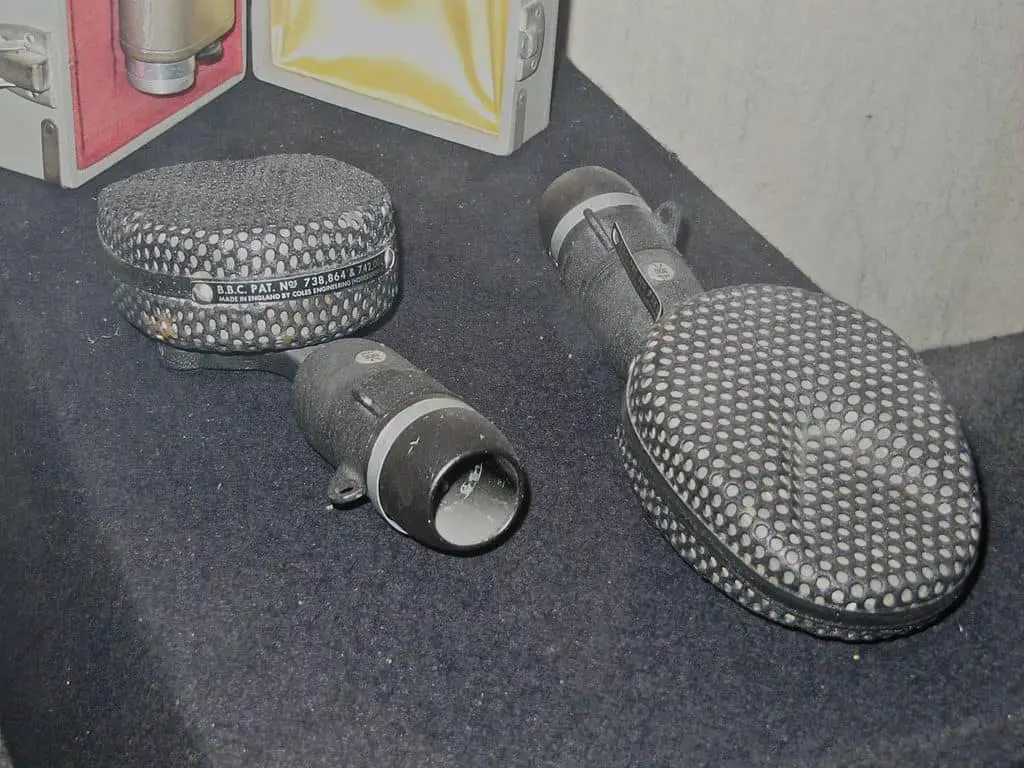
That early-Beatles/Abbey Roads sound used:
- STC/Coles 4038 as the overhead microphone
- STC/Coles 4033-A as the kick drum microphone
Sometimes, the AKG D20 would be substituted for the kick drum. However, you’d be fortunate to have access to any of these original microphones. Luckily, there are many recreations of these legendary microphones.
For the kick drum, you’ll be better off with the AKG D112 (recreation of the AKG D20).
For the overhead microphone, you’ll have difficulty finding anything that competes with the STC/Coles 4038.
Just keep in mind that the microphones they were using were both dynamic (ribbon). To be more specific, the overhead microphone was bi-directional while the kick drum microphone was a combination of bi-directional/omni-directional (combining them resulted in the uni-directional (cardioid) polar pattern).
In other words, you’ll want to work with ribbon microphones if you want that “vintage” sound.
I personally believe you can work with any microphone as long as it fits these criteria. If you’re looking for something more affordable than the Coles 4038, I recommend reading my product review on the Avantone Pro CR-14 dynamic (ribbon) microphone.
Which signal processors did The Beatles use to record drums?
Now, one of the most important characteristics of the Abbey Road sound (aka The Beatlemania sound) was the use of the Fairchild compressor/limiter. If you haven’t got one of these luxurious units at your disposal, you can always use Universal Audio’s excellent plugins.
So, compression was one of the essential elements of that classic sound.
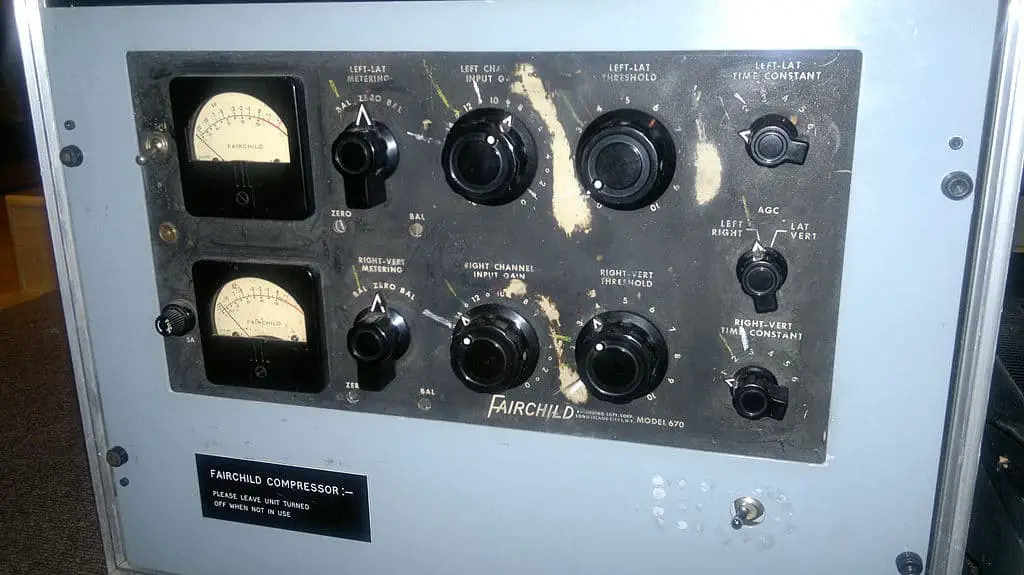
To be more precise, the compression was quite aggressive, especially on the kick drum. The resulting “squashed” sound was obtained by sending the entire mix through the Fairchild. That’s why the cymbals sound the way that they do.
It wouldn’t sound the same if they were all sent individually, remember that!
It’s also important to boost the top-end to compensate for any loss of transient-response.
Engineers at Abbey Roads would usually boost 10 dB at 10,000 Hz. Another EQ technique that they used was the so-called “filtered reverb”. It can be achieved by sending an alternate version of the mix with the low frequencies (below 600 Hz) and high frequencies (above 10,000 Hz) cut.
It should be sent to either:
- Plate Reverb
- Chamber Reverb
It’ll really add some wetness to the dry sound of the un-processed drums.
Other than that, just keep in mind that everything was recorded in mono in the 60s. However, there’s nothing stopping you from taking what you’ve learned here and applying it to stereo.
It just won’t sound the same, but that’s not necessarily a bad thing.
Either way, the best way to have access to these legendary signal processors is by integrating Universal Audio’s revolutionary technology into your workflow. I seriously recommend checking out my article entitled “are Universal Audio interfaces worth it” to get a better understanding.
Otherwise, you’ll have to think about doing some serious collecting (and saving up, of course).
The Beatles changed the way we record drums
It’s true that The Beatlemania sound evolved throughout the years. Albums like Sgt. Pepper’s Lonely Hearts Club Band witnessed the addition of even more microphones. We’re talking about microphones for each tom and even the cymbals (like the hi-hat).
That’s starting to sound more like the contemporary sound used by rock bands today.
However, the original Beatles sound was achieved by simply combining two microphones. One overhead and one kick drum microphone is all it took to change the way we heard music.
It’s not the only way to record drums with two microphones though!
I recommend reading this blog post if you’re looking for some more ideas.
Other than that, it’ll take some serious planning if you’re looking to emulate The Beatles. The STC/Coles 4038 are really expensive and so are the STC/Coles 4033-A. You’ll be better off with the AKG D112 for the kick drum microphone though.
I also think you’d be satisfied with any decent ribbon microphone for the overhead.
As far as signal processing, there’s nothing better than Universal Audio in my opinion.
So, you’ll most likely need to compromise here and there, but you now know how to achieve The Bealtes drum sound. That’s how the most famous pop/rock band in history recorded drums, but what about you?
Let us know how you do things in the comments!
How did The Beatles record drums anyway? It was one of my most pressing questions. I knew what I was looking for in terms of sound, but I needed to know how they achieved it. To my disbelief, it took only two microphones to get the job done more effectively than drum kits mic’d with several microphones. If you’re interested in learning about the different microphone configurations for drums though, check out my articles on the subject. Also, don’t forget to grab yourself a FREE copy of my ebook. Thanks!
Sources:
https://www.musictech.net/tutorials/recreate-abbey-road-drum-sound/
https://producelikeapro.com/blog/classic-studio-techniques-getting-that-early-beatles-drum-sound/
